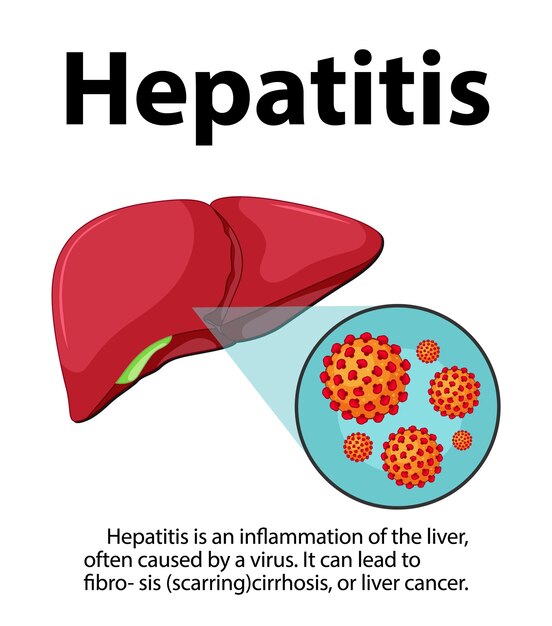
Table of Contents
Notwithstanding sharing two or three tantamount characteristics, like procedures for transmission and potential for ceaseless contamination, these defilements have essential separations in their science, treatment approaches, and general success thoughts.
DNA contamination, known as hepatitis B disease (HBV), is transmitted through contact with overpowering normal fluids, such as blood and sexual fluids.
It can incite unprecedented and advancing disorders, with an inoculation open to forestall pollution.
Unusually, Hepatitis C infection (HCV) is an RNA defilement fundamentally sent through blood-to-blood contact, regularly connected by dividing needles between intravenous medication clients.
While remarkable HCV contaminations can happen, most ruined people energize consistent debasements, fundamentally expanding the risk of liver problems, cirrhosis, and liver-compromising turn of events.
The requirement for explicit methodologies is one more part of the treatment distinctions.
While long-term antiviral treatment may be necessary for persistent HBV infections, direct-acting antiviral therapies for persistent HCV have made significant progress and can treat the majority of patients.
Understanding these key capabilities is huge for solid assumption, examination, and treatment philosophy.
By highlighting issues and providing specific information, medical professionals can better prepare individuals to protect themselves and their organizations from serious viral infections.
What Differences hepatitis B from hepatitis C?

The differences between Hepatitis B and C are huge for figuring out their effect on thriving.
The real pollution, most importantly, changes: Hepatitis B is accomplished by the Hepatitis B illness (HBV), a DNA defilement, while Hepatitis C is accomplished by the Hepatitis C tainting (HCV), an RNA pollution.
Because of this fundamental contrast, they recreate and respond differently to medications.
Transmission courses comparatively shift by and large.
Hepatitis B can be conferred through blood, sexual contact, and from mother to young adult during work. Since it can stay outside the body for a drawn-out timeframe, it is more contagious.
Then again, Hepatitis C is essentially spread through blood-to-blood contact and, for the most part, tracked down by dividing needles between drug clients.
It is doubtful to be gone on through sexual contact and isn’t sent through easygoing contact.
Clinically, the two debasements can incite serious and advancing liver sickness however, their advancement contrasts.
Hepatitis B can accomplish advancing contaminations in around 5-10% of grown-ups, possibly inciting serious liver confusion like cirrhosis or liver disorder.
Be that as it is, in the middle, somewhere in the range of 70% and 80% of cases, hepatitis C causes persevering illness, with a more serious gamble of extreme liver harm over the long haul.
Treatment approaches also feature incoherence: Hepatitis B often deals with antiviral drugs, while Hepatitis C can be improved with direct-acting antivirals.
Understanding these distinctions is essential for effective countermeasures, detection, and treatment of the two situations.
How Are the Differences Between Hepatitis B and C Sent?

The capabilities between Hepatitis B and C in transmission are fundamental for abhorrence systems. The vast majority of the ways hepatitis B (HBV) is spread are according to the accompanying:
Blood:
Contact with dirtied blood, commonly through shared needles or needles.
Sexual Contact:
Fundamentally, having unprotected sex with a spoiled individual builds the gamble of transmission.
Mother to Youth: During work, a sullied mother might send the contamination to her youngster.
Reaching the Body’s Fluids:
Openness to other standard liquids, like spit or semen, can similarly convey the illness. However, this is astonishing.
Oddly, Hepatitis C (HCV) transmission essentially happens through blood:
Blood-to-Blood Contact:
The most normal course is sharing needles, making intravenous remedies utilize a high-risk lead.
Sexual Contact:
Hepatitis C can be transmitted sexually, but it is much less common than Hepatitis B. It mostly affects people who have multiple sexual assistants or engage in certain high-risk behaviors.
Mother to Youth:
Understanding these transmission pathways is fundamental for successful countermeasures and control measures against the two illnesses, even though there is a gamble of transmission during pregnancy that is essentially lower than that of Hepatitis B.
What Are the Clinical Results Related to the Differences Between Hepatitis B and C?

The clinical results related to the capabilities between Hepatitis B and C can move, influencing treatment and significant length flourishing.
Hepatitis B (HBV) disease can cause both intense and constant contaminations.
While different grown-ups clear the infection suddenly, around 5-10% develop continuing Hepatitis B, which can advance to serious liver illnesses, including cirrhosis and hepatocellular carcinoma (liver compromising turn of events).
Continuing on HBV affliction as frequently as conceivable requires steady checking and treatment to block intricacies.
Resolute Hepatitis C is a huge wagered factor for liver cirrhosis and hepatocellular carcinoma. HCV treatment has developed recently with direct-acting antiviral treatments, which can be controlled through vaccination and antiviral medications.
All around, the two pollutants present basic success prospects, yet the particular results rely on parts, for example, the illness type, individual safe reaction, and acceptance of treatment.
For effective organization and expectation methods for both Hepatitis B and C, an understanding of these clinical outcomes is essential.
What Medications Contribute to the Differences Between Hepatitis B and C?

The drugs that incorporate the separations between Hepatitis B and C mirror the undeniable properties of every single sickness and their solitary disease processes.
For Hepatitis B (HBV), treatment constantly relies on whether the debasement is remarkable or persistent.
Outrageous Hepatitis B reliably doesn’t need treatment, as most grown-ups will clear the tainting separately.
However, for persistent HBV, antiviral medications such as tenofovir or entecavir, which reduce the risk of liver disease and suppress viral replication, may be expected.
Pegylated interferon is occasionally utilized, especially for sensitive liver disease patients. Long-term monitoring is essential because the spread of HBV can lead to complications like liver infection or cirrhosis.
Then again, the treatment for Hepatitis C (HCV) has developed emphatically with the presentation of direct-acting antivirals (DAAs).
These drugs target unequivocal times of the HCV life cycle, truly facilitating the disease in more than 95% of cases.
The normal term of a treatment plan is eight to twelve weeks, and it involves a blend of medications that are both extraordinarily fruitful and especially persevered with relatively few optional impacts.
Since there is no counteracting agent for HCV, not at all like for HBV, early recognition and treatment are fundamental for forestalling long-haul liver harm.
Even though both HBV and HCV necessitate careful organization, their treatment regimens differ significantly, highlighting the need for new approaches in light of the type of hepatitis infection involved.
FAQ’s
Q: What are the principal Differences between Hepatitis B and C?
Hepatitis B is achieved by the Hepatitis B disease (HBV), while Hepatitis C is achieved by the Hepatitis C ailment (HCV). They shift in transmission, treatment, and potential for steady pollution.
Q: How are Hepatitis B and C sent?
Hepatitis B is essentially sent through contact with dirtied regular liquids, while Hepatitis C is principally spread through blood-to-blood contact.
Q: Might hepatitis B and C be relieved at any point?
Despite its inability to be treated, hepatitis B can be managed. Hepatitis C, notwithstanding, can be feeling quite a bit improved with antiviral drugs.
Q: What are the normal Differences of Hepatitis B and C?
Both may cause weariness, jaundice, and stomach torment. However, various individuals with Hepatitis C stay asymptomatic for a surprisingly long time, while aftereffects of Hepatitis B can show up even more quickly.
The Last Note
Understanding the capabilities between Hepatitis B and C is crucial for productive assumption, assessment, and treatment.
Every pollution presents striking inconveniences and requires custom-fitted procedures for the board. When people are informed, they are more likely to safeguard their health and seek the appropriate medical care.
